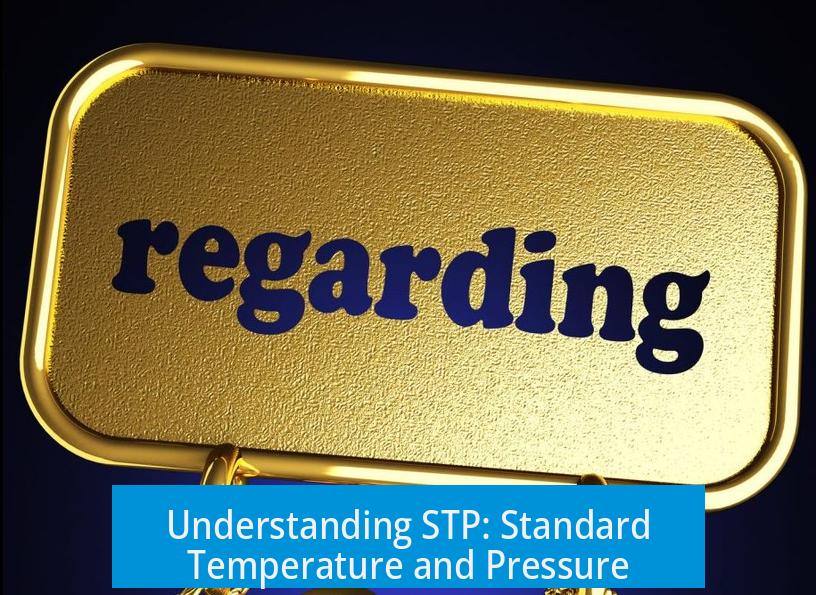Understanding STP: Standard Temperature and Pressure

STP is defined as a temperature of 273.15 K (0 °C) and a pressure of 105 Pa (1 bar). These conditions provide a fixed reference point used widely in chemistry to compare experimental results related to gases.
What STP Means in Practice
STP offers a consistent baseline for measuring properties like gas volume and molar volume. At STP, one mole of an ideal gas occupies roughly 22.7 liters. This standardization helps scientists and educators communicate results effectively.
Why Use STP?

- Provides uniformity across studies and textbooks.
- Facilitates accurate comparisons of gas behavior.
- Eliminates confusion caused by varying lab conditions.
Alternative Standards: NTP and Others
Besides STP, other conditions serve as common references. One example is Normal Temperature and Pressure (NTP), defined as 293.15 K (20 °C) and 1 atm pressure. Such alternatives reflect more typical lab environments, useful in certain contexts.
Limitations of Using Room Temperature
Room temperature varies worldwide and lacks a universally accepted value. It might range from 20 °C to 25 °C or fluctuate depending on location and season. Because of this variability, room temperature does not provide reliable consistency for comparison.
In experimental work, defining your lab’s precise temperature and pressure is essential if room temperature is used for calculations. However, this defeats the purpose of a standard benchmark.
Criticism and Educational Perspectives on STP
STP’s choice of 0 °C as the standard temperature faces criticism. Some educators argue that 20 or 25 °C with 1 bar pressure would better reflect typical lab conditions students encounter. This shift could make gas volume estimations more practical.
For general chemistry students, knowing gas volume at 0 °C is less relevant than having a quick estimation at familiar temperatures. Experts working with precise thermal controls may still prefer 0 °C for reproducibility to multiple decimal places.
Key Takeaways
- STP sets 273.15 K and 105 Pa as standard conditions for gas measurements.
- It offers a uniform point to compare experimental data across labs.
- Alternatives like NTP use more common lab temperatures.
- Room temperature varies, making it unreliable as a universal standard.
- Educational discussions suggest shifting towards 20 or 25 °C and 1 bar for practical student learning.
What exactly does STP stand for in temperature and pressure terms?
STP means standard temperature and pressure. It is defined as 273.15 K (0 °C) and 10⁵ Pa (1 bar). This specific condition helps scientists compare experimental results more easily.
Why is STP used instead of room temperature for experiments?
Room temperature varies between labs and locations. It is not standardized worldwide. STP provides a fixed baseline for results comparison by setting exact temperature and pressure values.
Are there alternatives to STP for standard conditions?
Yes, one common alternative is NTP, which sets temperature to 293.15 K (20 °C) and pressure to 1 atm. Different fields may choose standards best suited to their practical needs.
What are some criticisms of using STP in education?
Many argue STP at 0 °C is too precise for general chemistry. They suggest using 20 or 25 °C and 1 bar, reflecting typical lab conditions and simplifying calculations for students.
Does using STP affect how gas volumes are calculated?
Yes. Gas volume calculations depend on temperature and pressure. STP conditions give a fixed reference volume, but actual lab temperatures usually differ, so adjustments may be needed.





Leave a Comment